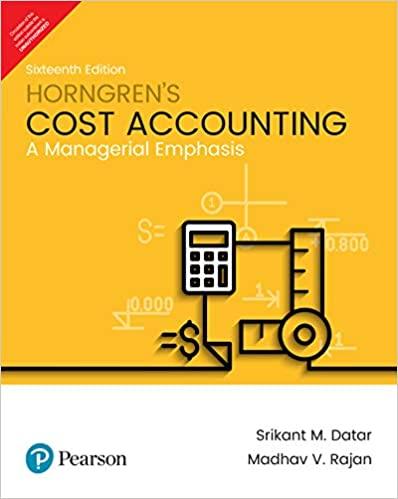Question
Problem 18-28 (a) (LO. 5) A business entity's taxable income before the cost of certain fringe benefits paid to owners and other employees is $11,400,000.
Problem 18-28 (a) (LO. 5)
A business entity's taxable income before the cost of certain fringe benefits paid to owners and other employees is $11,400,000. The amounts paid for these fringe benefits are as follows:
Note the following: (1) Assume the fringe benefit plans are not discriminatory and (2) The business entity is equally owned by four owners.
| Owners | Other Employees | |||
| Group term life insurance | $500,000 | $1,200,000 | ||
| Meals and lodging incurred for the | ||||
| convenience of the employer | 300,000 | 550,000 | ||
| Pension plan | $160,000* | $480,000 | ||
| *H.R. 10 (Keogh) plan for partnership and S corporation | ||||
The taxable income of the business entity, if it is a partnership, is $. If the entity is a C corporation, it is $, and if the entity is an S corporation, it is $.
Feedback
b. Indicate whether the following statements are true or false regarding the effects on the owners for each of the three business forms.
1. Greater-than-2% shareholders of an S corporation are treated the same as employees for fringe benefit purposes.T/F 2. For group term life insurance and meals and lodging to be treated as fringe benefits, the individual must be an employee.T/F 3. For the owner-employees of a partnership or an S corporation who have contributions made to their H.R. 10 plans by the business entity, the amounts paid must be included in their gross income.T/F 4. The amounts paid are deductible by the C corporation and excludible by the employee-shareholders.T/F
Step by Step Solution
There are 3 Steps involved in it
Step: 1

Get Instant Access to Expert-Tailored Solutions
See step-by-step solutions with expert insights and AI powered tools for academic success
Step: 2

Step: 3

Ace Your Homework with AI
Get the answers you need in no time with our AI-driven, step-by-step assistance
Get Started


